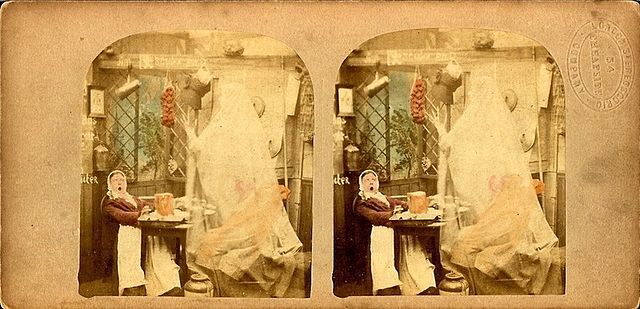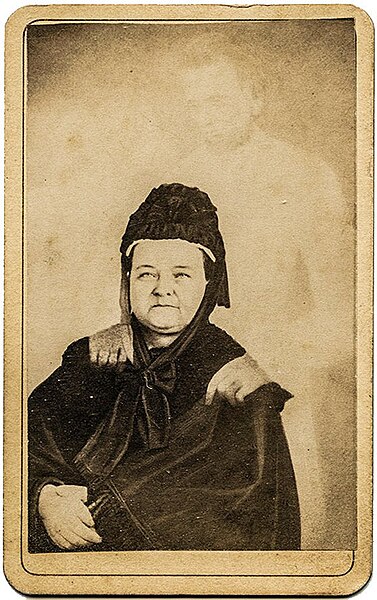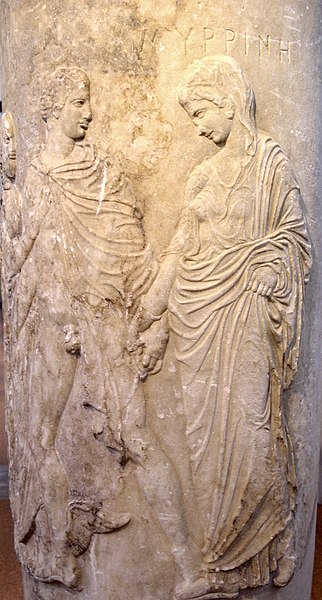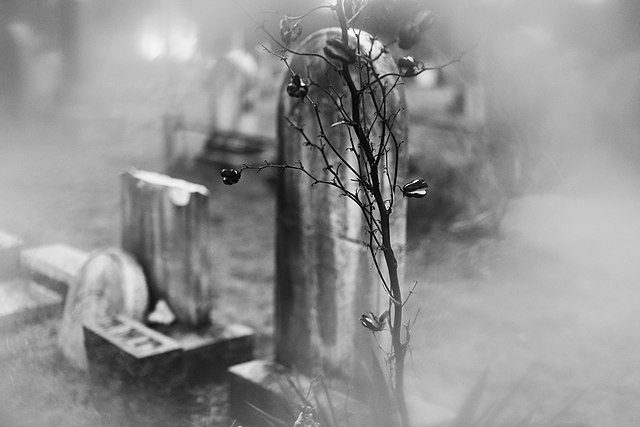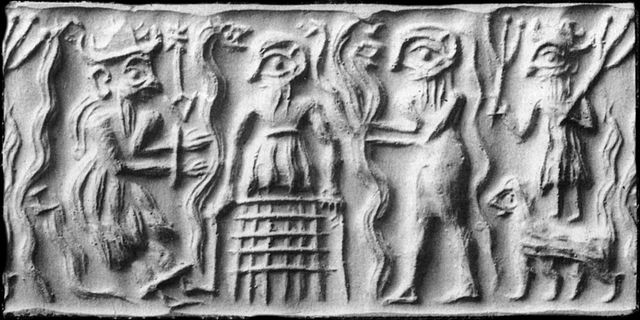Spirit photography is a type of photography whose primary goal is to capture images of ghosts and other spiritual entities, especially in ghost hunting. It dates back to the late 19th century. The end of the American Civil War and the mid-19th Century Spiritualism movement contributed greatly to the popularity of spirit photography. The omnipresence of death in the Victorian period created a desire for evidence of the afterlife, and those who partook in Spirit Photography oftentimes hoped to receive images that depicted the likeness of a deceased relative or loved one. Photographers such as William Mumler and William Hope ran thriving businesses taking photos of people with their supposed dead relatives. Both were shown to be frauds, but "true believers", such as Sir Arthur Conan Doyle, refused to accept the evidence as proof of a hoax.
Spirit photograph by Édouard Isidore Buguet
The Ghost in the Stereoscope
One of Mumler's most famous images, purportedly showing Mary Todd Lincoln with the ghost of her husband, Abraham Lincoln
Circa 1868
In folklore, a ghost is the soul or spirit of a dead person or non-human animal that is believed to be able to appear to the living. In ghostlore, descriptions of ghosts vary widely, from an invisible presence to translucent or barely visible wispy shapes to realistic, lifelike forms. The deliberate attempt to contact the spirit of a deceased person is known as necromancy, or in spiritism as a séance. Other terms associated with it are apparition, haunt, haint, phantom, poltergeist, shade, specter, spirit, spook, wraith, demon, and ghoul.
Relief from a carved funerary lekythos at Athens showing Hermes as psychopomp conducting the soul of the deceased, Myrrhine into Hades (ca. 430-420 B.C.)
Yūrei (Japanese ghost) from the Hyakkai Zukan, ca. 1737
Union Cemetery in Easton, Connecticut is home to the legend of the White Lady.
Ancient Sumerian cylinder seal impression showing the god Dumuzid being tortured in the Underworld by galla demons


